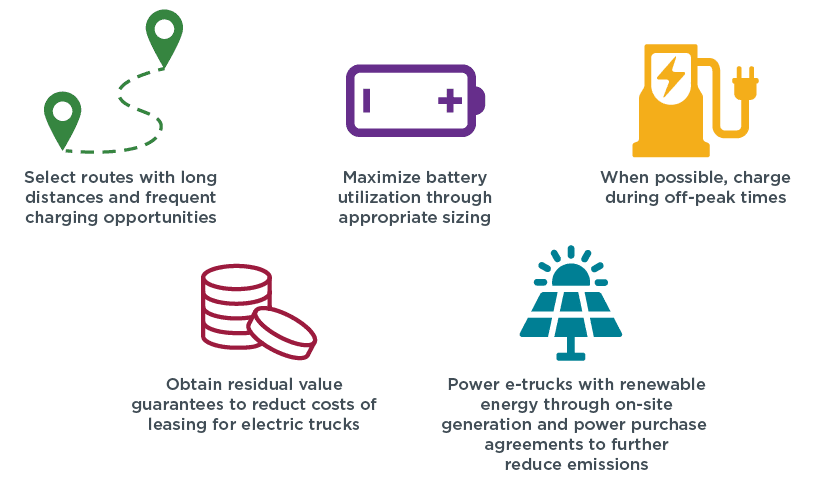Road freight decarbonization in Europe: Readiness of the European fleets for zero-emission trucking
Report
Real-world use cases for zero-emission trucks: Heavy tractor-trailers for goods transport in the European Union
Heavy electric trucks for regional distribution and long-haul transport are still mostly in the pilot phase, and there is little data of how those vehicles perform in real-world operation. However, evidence on key vehicle performance indicators such as operational range, energy consumption, and total cost of ownership (TCO) is crucial to understand the potential and limitations of the current ZET market.
To help fill this gap, this report analyzes the real-world performance and costs of 91 electric tractor-trailer trucks deployed by members of the European Clean Trucking Alliance (ECTA). It focuses on heavy tractor-trailer trucks with a gross vehicle weight above 30 tonnes used for the regional delivery of goods across three use cases—multimodal transport, quasi-shuttle delivery, and multi-destination distribution. Vehicles have similar technical specifications across use cases, with an average battery size of 530 kWh.
Key findings:
- The energy consumption of electric tractor-trailer trucks can vary across use cases and within each use case, despite similar vehicle technical specifications. Energy consumption of the trucks in this study ranged from 92 to 150 kWh/km and was on average 65% lower than the consumption of equivalent diesel trucks.
- Real-world driving ranges are higher than the nominal values advertised by manufacturers. Real-world ranges experienced by participating fleets averaged 11%–19% higher than the values advertised.

Figure 1. Normal distribution of the experienced deviation from the nominal range as advertised by OEMs
- Underutilization of batteries negatively impacts total cost of ownership. The trucks analyzed in this report had an average depth of discharge across all vehicles of 44%, indicating the batteries were oversized for the use case. This underutilization negatively impacted total cost of ownership (TCO) parity with equivalent diesel trucks due to the high battery costs.
- To maximize the performance of electric tractor-trailer trucks, fleets can prioritize high daily driving distances and efficient charging strategies. To fully realize the economic potential of electric tractor-trailer trucks, the vehicles are best suited for use cases with high daily driving distances, provided there is route predictability and frequent charging opportunities. Charging strategies should enable high depths of discharge to maximize battery utilization, and fleets should aim to access low energy prices from local utilities, for example through off-peak tariffs.

Figure 2. Lessons learned and best practices to optimize the real-world performance of zero-emission tractor-trailer trucks
